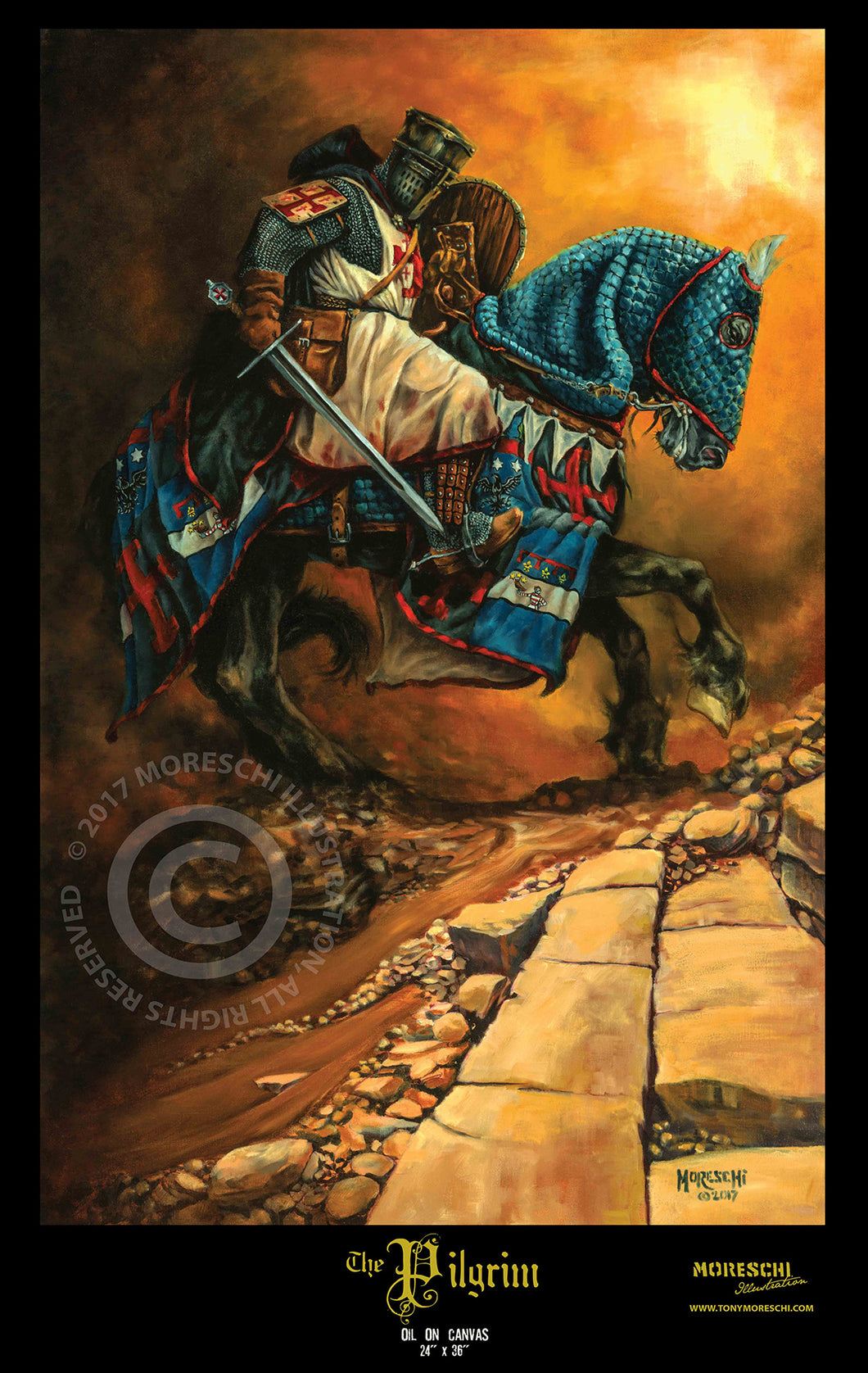
THE PILGRIM
Regular price
$35.00
Sale
This oil painting is the first of many Crusader era drawings and paintings both to inspire and instruct.
The painting style is done in Moreschi's "constant attempt and endeavor" for that "Classic American Illustrative" look and feel that inspires one's imagination. Painting done in a style not to depict every hair of the horse, or every ring in the mail of the knight... but applying paint in such a manner to preserve the integral look of the subject while adding the feel of the weight, temperature, and environment through the use of tone, color, and brushwork.
Ah...but to instruct and spark the imagination at the same time? This mounted Knight tells a story of the Crusader era often overlooked and ignored because of the current pop culture surrounding the theme that only "those mad monks of the Templar order" were hacking their way through the Levant for blood, treasure, and glory!
This painting, purposefully titled THE PILGRIM, represents the European christian knight who uprooted himself, his squires, and often armies to travel to the Holy Land during the "pilgrim season" estimated to be between April and October of every year. A portion of the tens of thousands of pilgrims would of included knights, lords, and other forms of fighting men, of whom could be mustered into service in times of a military emergency. Some came for the sole purpose of defending the Holy Land, others were not, only to be called upon through necessity.
The Pilgrim depicts a knight or lord of Italian origin (Italian coat of arms) working in defense for the Kingdom of Jerusalem.
"In order to represent the common pilgrim knight of Europe on a pilgrimage, I added the family coat of arms to the 'caparison' (horse trapper) of the knight's warhorse. A caparison was being used in this period in the Holy Land due to the pressure from local archers on mounted units. The caparison was a form of horse armor known as barding. It was used to deflect and lessen damage caused by arrows. It was used in conjunction with 'gambeson' undercloth - quilted cloth coverings or clothing. It was common for Medieval caparisons to be embroidered with a knight's coat of arms or emblazons of the monastic military orders. I also wanted to place the Knight in the Latin Kingdom of Jerusalem. The Levant was broken up into many principalities, or states, such as the Principality of Antioch, County of Edessa, County of Tripoli, and the Kingdom of Jerusalem. The Kingdom of Jerusalem coat of arms is emblazoned with the 'five crosses.' So I incorporated this emblazon on the tunic and squared "rondel" protecting the arm and shoulder of our 'drafted' knight."
The warhorse is also protected with a gambeson styled "chanfron" - the piece covering the horse's head. Covering his neck is a gambesoned "crinet." A gambeson saddle blanket is also used which serves as a "flanchard" piece for protection of the horses side. All in the color blue, trimmed with red and white ear coverings to match the European coat of arms.
This piece is available in Limited Edition sets of "giclee fine art paper" prints. The image sizes of the print sets are listed. The 24" x 36" image size represents the same size as the original painting.
Note: the black border, title information, and copyright watermark on the image is not "part of" nor is included in the actual print of the art.